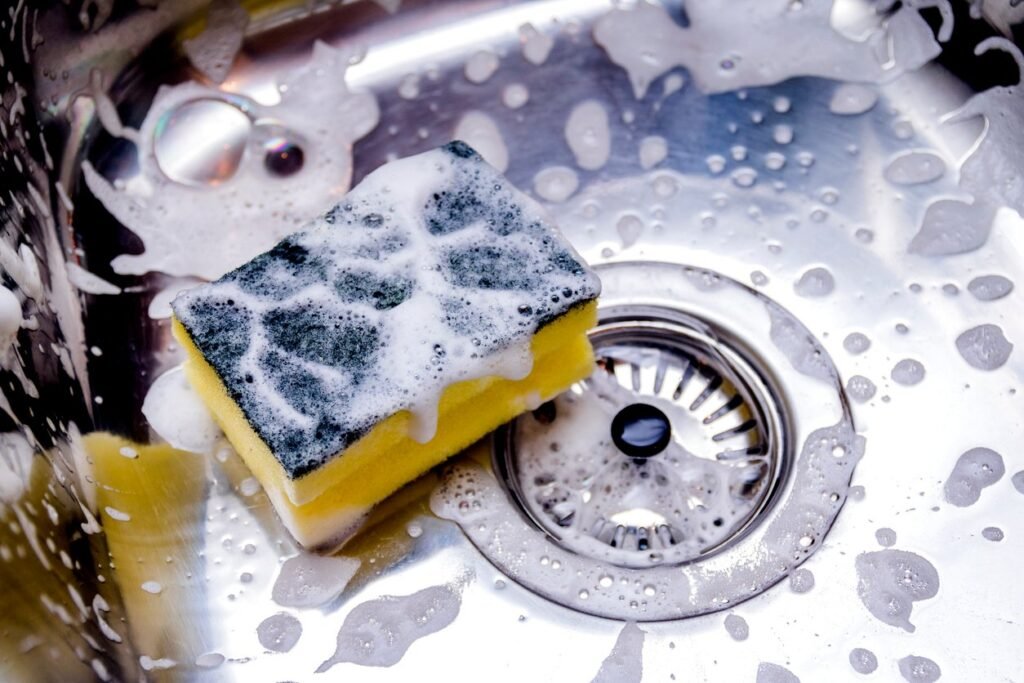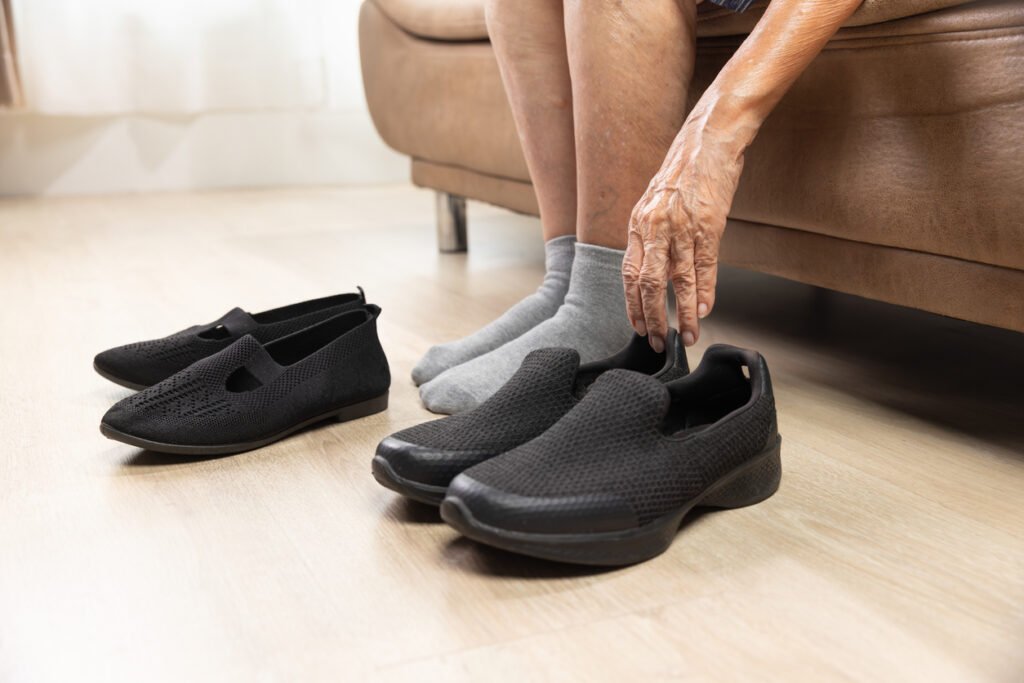Your Kitchen Sponge Is Basically a Bacterial City

It might look innocent sitting beside your sink, but your kitchen sponge is actually one of the most densely packed microbial hotspots in your home. Researchers have found that sponges can house billions of bacteria in every cubic inch. And it’s not just a single species — it’s a complex, thriving ecosystem, with different kinds of microbes coexisting, competing, and evolving side by side.
The warm, moist, and nutrient-rich environment makes the sponge ideal for bacteria to grow. Even regular rinsing or microwaving doesn’t fully wipe them out. Some studies have even shown that “cleaning” a sponge can help more resilient bacteria dominate. While most of these microbes aren’t harmful, their sheer abundance and ability to adapt make the sponge a microbial universe worth reconsidering. Next time you wipe your counter, think about what you might be spreading instead of removing.
Your Pillow Holds a History of Your Microbiome
You might think of your pillow as a soft place to rest your head — but it’s also a living archive of your personal microbes. Over time, it collects everything from skin cells and sweat to bacteria, fungi, and even microscopic insects. This isn’t just gross trivia. It actually tells a story about how your body interacts with your indoor environment.
Scientists studying bedroom microbiomes have found that pillows can develop unique microbial communities based on who sleeps on them. These microbes are influenced by your skin, your breath, and even your hair products. And while many of these bacteria are harmless or even helpful, pillows can also harbor allergens and irritants, especially if they’re rarely washed. So if your pillow hasn’t had a deep clean in a while, now’s a good time to think about more than just changing the case. You’re lying on a literal ecosystem every night.
Houseplants Change the Microbial Balance of a Room
Bringing greenery indoors doesn’t just freshen the air — it changes the microbial makeup of your home. Houseplants harbor their own microbiomes, which include bacteria and fungi living in the soil, on the leaves, and even in the air immediately around them. These microbes aren’t just stuck in the pot. They can become part of the broader indoor ecosystem.
Studies show that plant-associated microbes can influence the kinds of bacteria found on nearby surfaces and even on human skin. The effect isn’t always predictable, but it tends to introduce a wider range of microbial diversity. This could be beneficial, especially since modern homes are often sealed up and sanitized in ways that reduce microbial variety. More microbial diversity is often linked to better immune health and resilience to allergens. So those succulents and ferns? They’re doing more than decorating your shelf. They’re reshaping your indoor microbiome in ways you probably never imagined.
Your Shoes Bring the Outside World In

Think your front door keeps the outside world at bay? Think again. Your shoes act like microbial carriers, picking up bacteria, fungi, and microscopic debris from every surface you walk on and tracking it directly into your living space. Floors, carpets, and even your bed can end up hosting traces of whatever your shoes last touched.
Microbiologists have found that soil-based bacteria — including some that influence plant health or live near water sources — can show up on indoor surfaces far from their origin, simply because someone wore their shoes inside. While most of these microbes aren’t harmful, some can include strains associated with allergies or infections, especially if you live in urban areas. Taking your shoes off at the door isn’t just a courtesy — it’s one of the simplest ways to reduce the transfer of outdoor microbes into your personal space. That cozy rug underfoot? It might be cozier for bacteria than you think.
Your Bathroom Is a Microbial Launchpad
Bathrooms are often considered the cleanest rooms in the house due to frequent cleaning, but they can harbor a surprising array of microbes. One major contributor is the phenomenon known as “toilet plume.” When you flush, especially without closing the lid, microscopic particles from the bowl can aerosolize and settle on nearby surfaces like toothbrushes, towels, and countertops. This dispersal can spread bacteria and viruses throughout the bathroom environment.
Moreover, the warm and humid conditions typical of bathrooms create an ideal breeding ground for bacteria and fungi. Moist surfaces, such as shower curtains and bath mats, can retain water, allowing microbes to thrive. Regular cleaning and proper ventilation are essential to minimize microbial growth and reduce the risk of exposure to potentially harmful organisms.
Household Dust Is a Microbial Time Capsule
Dust isn’t just a collection of dead skin cells and lint; it’s a complex mixture teeming with microbial life. Studies have shown that household dust can contain hundreds to thousands of different microbial species, including bacteria, fungi, and viruses. The composition of these microbial communities can vary significantly depending on factors like geographic location, the presence of pets, and the number of occupants in the home.
Interestingly, the specific microbes found in your home’s dust can provide insights into your lifestyle and environment. For instance, certain bacterial species are more prevalent in homes with pets, while others may indicate the presence of mold or damp conditions. Understanding the microbial makeup of household dust can offer valuable information about indoor air quality and potential health risks, especially for individuals with allergies or respiratory conditions.
Cleaning Products Can Disrupt Microbial Balance

While cleaning is essential for maintaining a healthy home, the overuse of certain cleaning products can inadvertently disrupt the natural microbial balance indoors. Antibacterial cleaners, for example, don’t discriminate between harmful pathogens and beneficial microbes. This indiscriminate killing can lead to a less diverse microbial environment, potentially allowing resistant strains to dominate.
Moreover, some studies suggest that a diverse indoor microbiome may play a role in supporting human health by helping to train the immune system and outcompete harmful pathogens. Therefore, it’s important to strike a balance between cleanliness and microbial diversity. Opting for milder cleaning agents, reducing the use of harsh chemicals, and allowing for some microbial exposure can help maintain a healthier indoor ecosystem.
